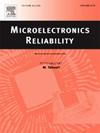Sputtering impact on warpage in FOWLP
IF 1.9
4区 工程技术
Q3 ENGINEERING, ELECTRICAL & ELECTRONIC
引用次数: 0
Abstract
Fan-out wafer level packaging (FOWLP), an advanced packaging technology that can achieve high performance and miniaturisation, has become a subject of considerable research interest. As one of the important high-temperature steps in the FOWLP process, the influence of the sputtering step on the amount of wafer deformation is a key element in the study of the reliability of FOWLP. This study investigates the changes in warpage during the sputtering steps through both simulation and experimental approaches. Particularly, for the degassing chamber (Degas) that has the greatest impact on wafer warpage, the study analyzed its working principle and the mechanism of warpage formation. It is proposed that the primary causes of the warpage change in the Degas chamber are the maximum wafer temperature and the maximum temperature difference. Based on this, simulation and experimental studies were conducted on wafer temperature and warpage changes under different heat flow rate, while also considering silicon chip thickness ratio, to provide insights into more methods for mitigating wafer warpage in PVD (Physical Vapor Deposition) processes. The results of the study show that the wafer temperature is positively correlated with the heat flow rate and high wafer temperature can lead to wafer warpage greater than 5 mm, which is a great challenge to the process. In addition, the article uses simulation to verify the impact of wafer silicon chip thickness ratio on warpage, verifying the conclusion that the wafer warpage is the largest when the silicon chip thickness ratio is around 20 %–30 %.
溅射对FOWLP翘曲的影响
扇出晶圆级封装(FOWLP)是一种可以实现高性能和小型化的先进封装技术,已经成为一个相当大的研究兴趣课题。溅射作为FOWLP工艺中重要的高温步骤之一,其对晶片变形量的影响是研究FOWLP可靠性的关键因素。本文通过模拟和实验两种方法研究了溅射过程中翘曲量的变化。特别针对对晶圆翘曲影响最大的脱气室(德加),分析了其工作原理和翘曲形成机理。提出了造成德加气室翘曲变化的主要原因是最高晶圆温度和最大温差。在此基础上,在考虑硅片厚度比的情况下,对不同热流速率下晶圆温度和翘曲变化进行了模拟和实验研究,以期为PVD (Physical Vapor Deposition)工艺中减轻晶圆翘曲的方法提供更多见解。研究结果表明,晶圆温度与热流率呈正相关,晶圆温度过高会导致晶圆翘曲大于5 mm,这对工艺是一个很大的挑战。此外,本文通过仿真验证了硅片厚度比对翘曲的影响,验证了硅片厚度比在20% - 30%左右时,晶圆翘曲最大的结论。
本文章由计算机程序翻译,如有差异,请以英文原文为准。
求助全文
约1分钟内获得全文
求助全文
来源期刊

Microelectronics Reliability
工程技术-工程:电子与电气
CiteScore
3.30
自引率
12.50%
发文量
342
审稿时长
68 days
期刊介绍:
Microelectronics Reliability, is dedicated to disseminating the latest research results and related information on the reliability of microelectronic devices, circuits and systems, from materials, process and manufacturing, to design, testing and operation. The coverage of the journal includes the following topics: measurement, understanding and analysis; evaluation and prediction; modelling and simulation; methodologies and mitigation. Papers which combine reliability with other important areas of microelectronics engineering, such as design, fabrication, integration, testing, and field operation will also be welcome, and practical papers reporting case studies in the field and specific application domains are particularly encouraged.
Most accepted papers will be published as Research Papers, describing significant advances and completed work. Papers reviewing important developing topics of general interest may be accepted for publication as Review Papers. Urgent communications of a more preliminary nature and short reports on completed practical work of current interest may be considered for publication as Research Notes. All contributions are subject to peer review by leading experts in the field.
 求助内容:
求助内容: 应助结果提醒方式:
应助结果提醒方式:


